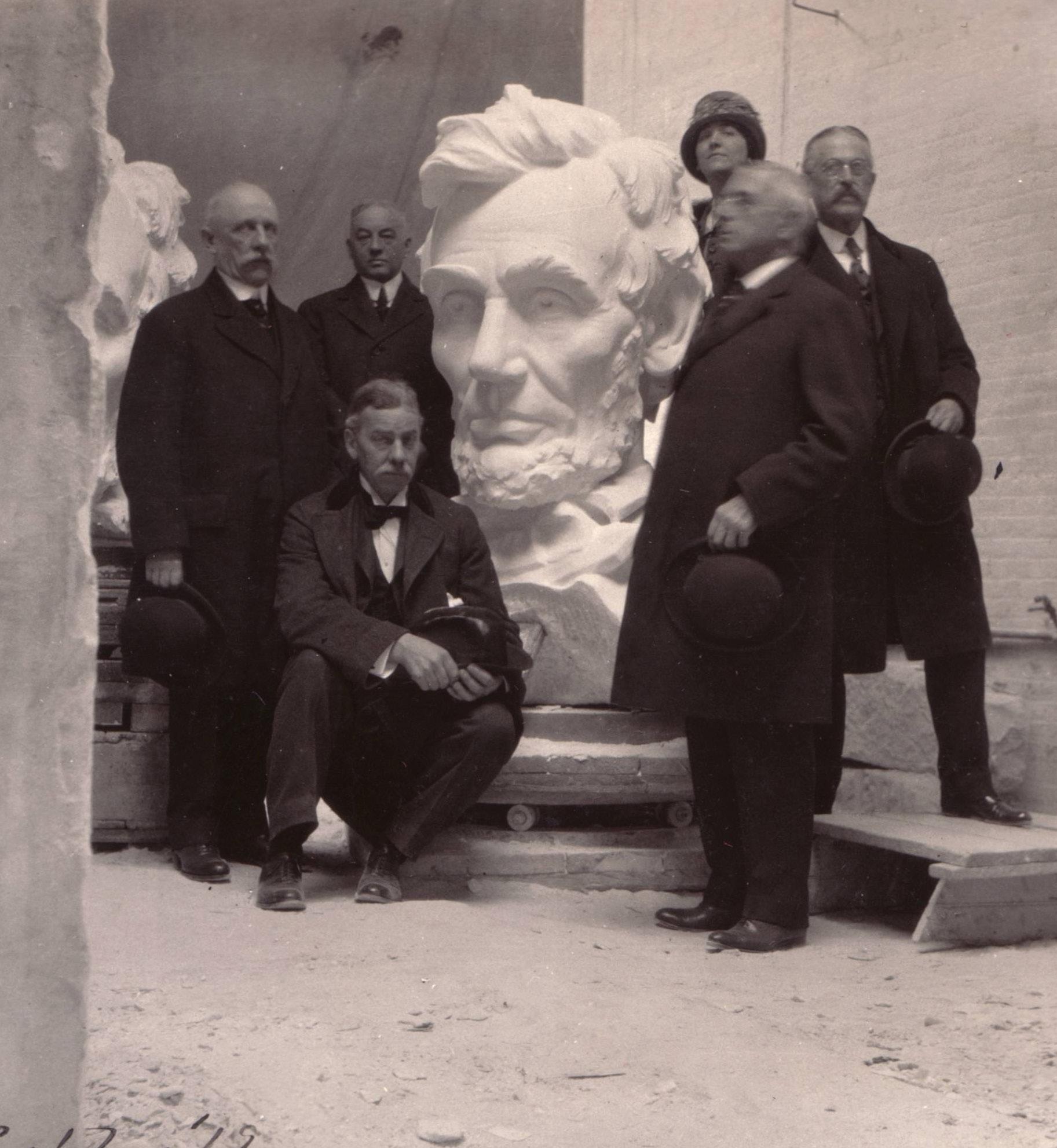
3 minute read
Object Lesson
In April 1917, Evelyn Longman and others involved in the project check on the Piccirilli Brothers’ work on carving the Lincoln statue.
To see more photographs of the project from Longman’s personal albums, visit www.loomischaffee. org/magazine.
Evelyn Longman’s Work on the Lincoln Memorial
Story by KAREN PARSONS

Evelyn Longman carves details of sculptural wreaths on the interior of the Lincoln Memorial in the fall of 1917.
Sculptor Evelyn Beatrice Longman rarely gave press interviews, but in April 1921 she sat with The Hartford Courant and offered enthusiastic, unguarded statements on her career and life as the newly married wife of Loomis’ headmaster, Nathaniel Batchelder. She commented directly on only one project, a monument still under construction. “There is one piece of work of which I can frankly say that I am proud … and that is the interior of the Lincoln Memorial. I did a part of that work.”
Interest in honoring Abraham Lincoln with a national monument began in 1867, two years after his assassination. The idea lay mostly in abeyance until 1910, when Congress established the Lincoln Memorial Commission. Within four years, the committee selected the site; the architect, Henry Bacon; and the sculptor, Daniel Chester French. Workers laid the building’s cornerstone on Lincoln’s birthday in 1915. America’s entrance into World War I slowed construction and, around the time of the war’s armistice in November 1918, Daniel Chester French entrusted Bronx-based marble cutters, the Piccirilli Brothers, to carve the massive seated Lincoln figure. The memorial’s dedication took place on Memorial Day in 1922.
Bacon celebrated his selection by the committee in a note to his friend and colleague Evelyn Longman: “Dear Trixina — Yesterday this piece of news appeared in the paper and isn’t it splendid! HOORAY — Rejoice with me.” French asked for Longman’s advice in June 1916 as he revised a small-scale model of the statue. “Dear Beatrice, Listen to me! I need you … because you are a sculptor. Now, I have sawed Lincoln in two and I have been trying him with different lengths of body and I find I can’t decide which is best by myself. In fact, as I have said, I need your critical eye to help me to a decision.”
Fifty-two photographs in Longman’s personal albums fully document her extensive 10-year involvement with the Lincoln Memorial; most details are notably absent from histories of the memorial. Deemed integral to the project by Bacon and French, she made numerous visits to the memorial’s construction site between 1915 and 1918 and viewed the carved Lincoln statue in process at Piccirilli’s workshop. In one playful photo, Longman sports a fishing pole at the memorial’s Tidal Basin; the caption reads, “No Fish.” Along the edges of another photograph of Longman, Bacon, French, and Mary French, the artist’s wife, is written, “Washington, April 2, 1917, On this day President’s message to Congress — about declaration of war with Germany.” Unnamed workmen and planning committee members; Mr. Wooley, the site superintendent; and Robert Todd Lincoln, son of the former president, also appear in these images.
Longman’s tangible “part” can be found in her albums too. Photographed in her working clothes, Longman carved sculptural wreath ornaments in the memorial’s interior during the fall of 1917. The popular national women’s magazine Good Housekeeping had earlier observed, “By sheer force of ability, Miss Longman has won her enviable place in American art, and she has gone into it ‘all over.’” Longman offered no comments to the press about her Lincoln Memorial work or her collaboration with Bacon and French, two of America’s most respected artists. In 1919, Longman became the first female sculptor inducted into the National Academy of Design, the second woman overall, an accomplishment she chose to downplay in her Courant interview. Instead, Longman’s career reflections seem more in line with a photo showing her sitting on the porch of the memorial’s wooden-shack construction headquarters. The caption reads: “Ready for work.”










